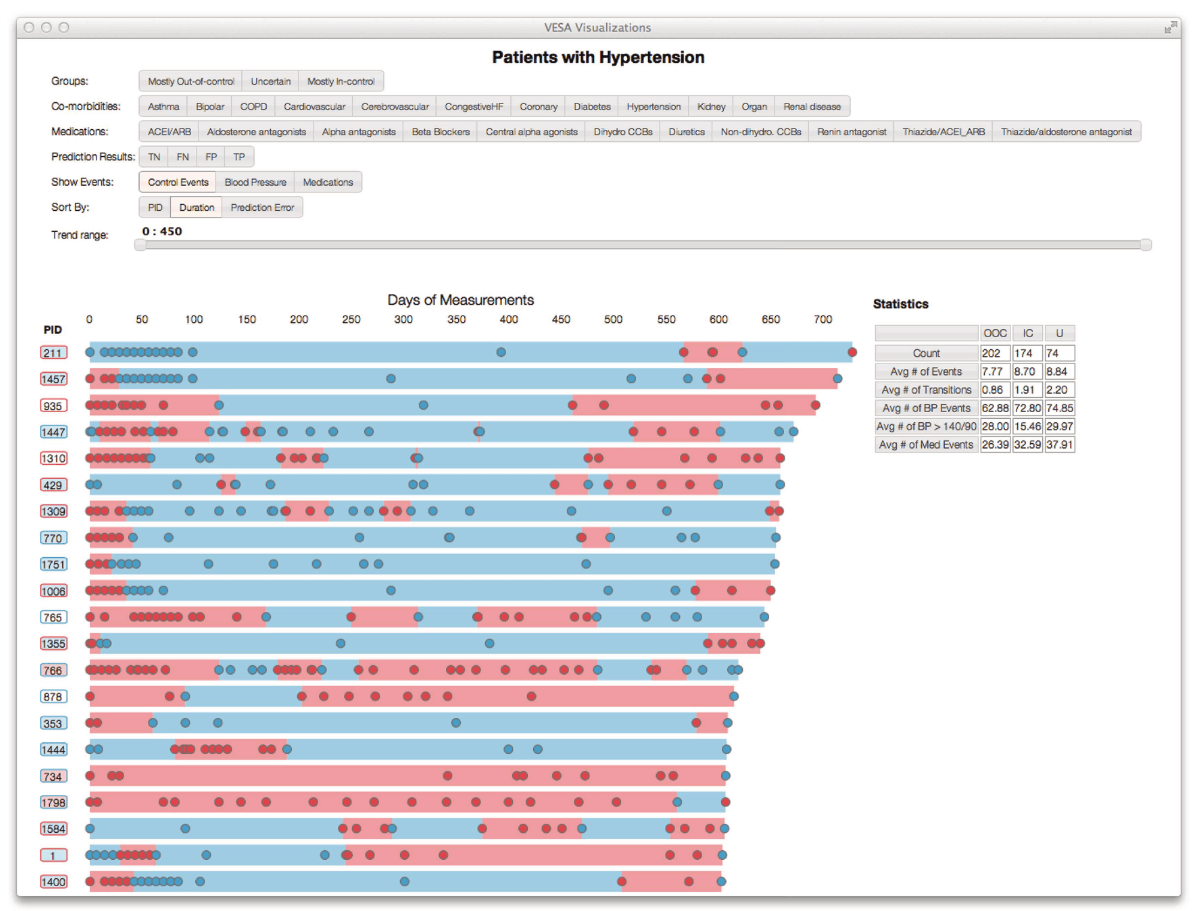Predicting changes in hypertension control using electronic health records from a chronic disease management program
Jimeng Sun
Candace McNaughton
Ping Zhang
Aris Gkoulalas-Divanis
Joshua Denny
Jacqueline Kirby
Thomas Lasko
Alexander Saip
Bradley Malin
Published at
Journal of American Medical Informatics Association
2014

Abstract
Objective: Common chronic diseases such as hypertension are costly and difficult
to manage. Our ultimate goal is to use data from electronic health records to
predict the risk and timing of deterioration in hypertension control. Towards
this goal, this work predicts the transition points at which hypertension is
brought into, as well as pushed out of, control. Method: In a cohort of 1294
patients with hypertension enrolled in a chronic disease management program at
the Vanderbilt University Medical Center, patients are modeled as an array of
features derived from the clinical domain over time, which are distilled into a
core set using an information gain criteria regarding their predictive
performance. A model for transition point prediction was then computed using a
random forest classifier. Results: The most predictive features for transitions
in hypertension control status included hypertension assessment patterns,
comorbid diagnoses, procedures and medication history. The final random forest
model achieved a c-statistic of 0.836 (95% CI 0.830 to 0.842) and an accuracy of
0.773 (95% CI 0.766 to 0.780). Conclusions: This study achieved accurate
prediction of transition points of hypertension control status, an important
first step in the long-term goal of developing personalized hypertension
management plans.